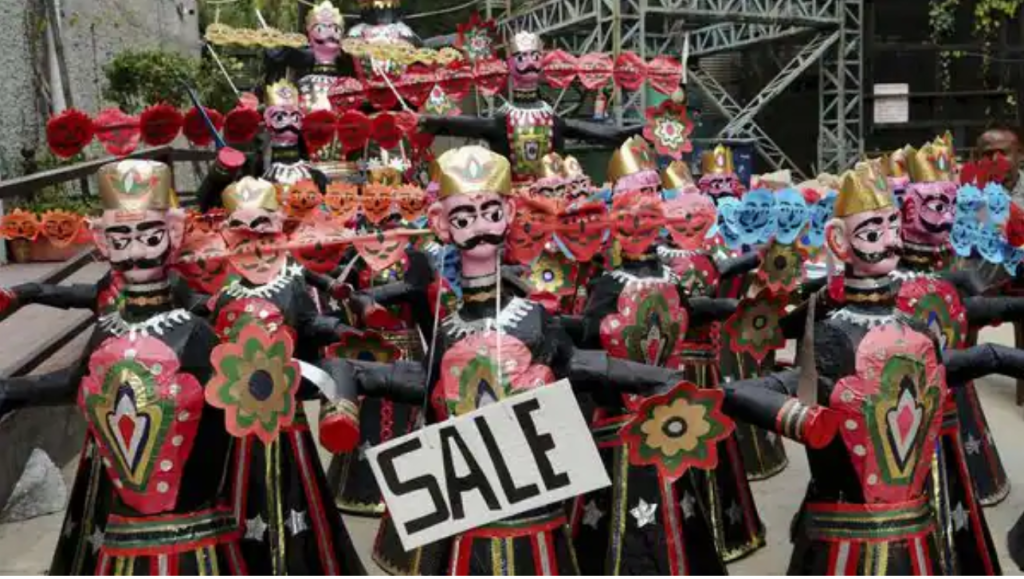Dussehra, also known as Vijayadashami, is an important Hindu festival celebrated with enthusiasm and fervour across India. One of the central and visually prominent traditions is the making and burning of effigies of Ravan. This centuries-old custom has deep symbolic significance, as it signifies the victory of good over evil, inspired by the epic story Ramayana. Making an effigy of Ravan is a precious part of the festival. It involves a creative and meticulous process to bring the ten-headed demon king Ravan to life.
In this article, we will guide you step by step through the process of crafting a Ravan effigy, allowing you to participate in this centuries-old tradition, rich in cultural and spiritual significance. Unleash your creativity and embark on a journey to understand the essence of Dussehra and the victory of righteousness.
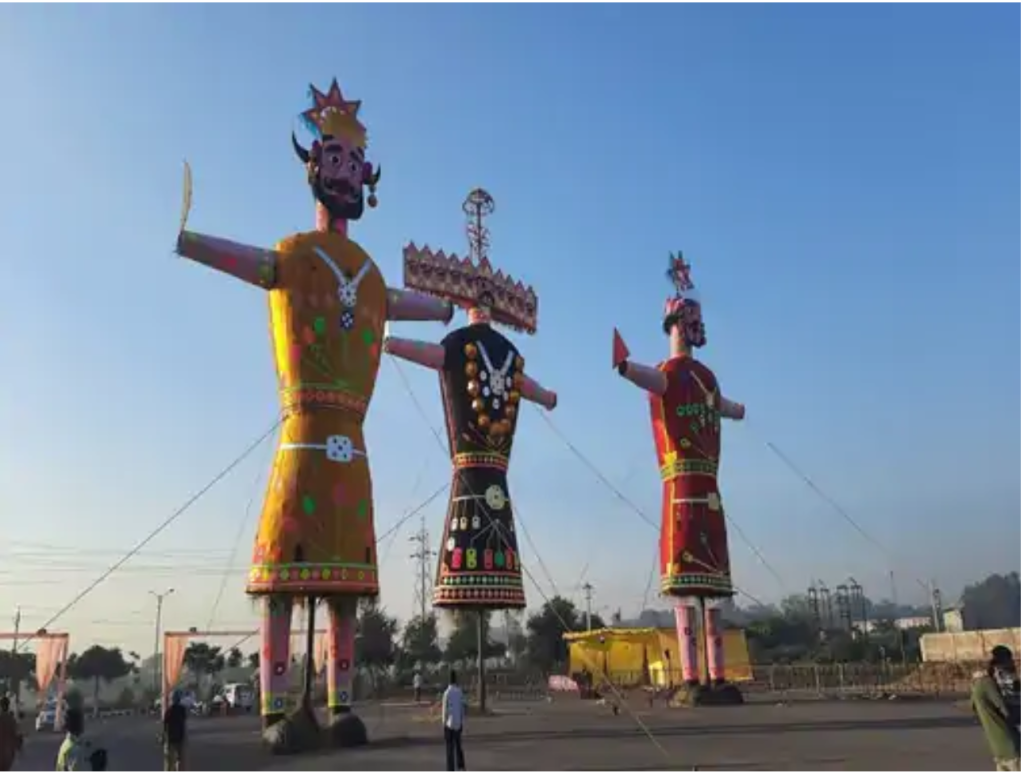
History of Ravan-Making
The origins of Ravan effigy-making can be traced back to the ancient Indian epic, the Ramayana, which narrates the life and adventures of Lord Rama. The story of Ravan, the ten-headed demon king of Lanka, is central to this epic. According to the Ramayana, Ravan abducted Sita, Lord Rama’s wife, leading to an epic battle between the forces of good and evil. After a fierce confrontation, Lord Rama emerged victorious, slaying Ravan
and rescuing Sita.
The burning of Ravan effigies on Dussehra represents the culmination of this epic tale and the triumph of righteousness. It is a way to reenact the victory of good over evil and serves as a powerful reminder of the consequences of wrongdoing. As the story goes, Ravan had immense knowledge and power but chose the path of tyranny and greed, which ultimately led to his downfall. The effigy burning signifies the destruction of the evil within us and the victory of virtuous qualities.
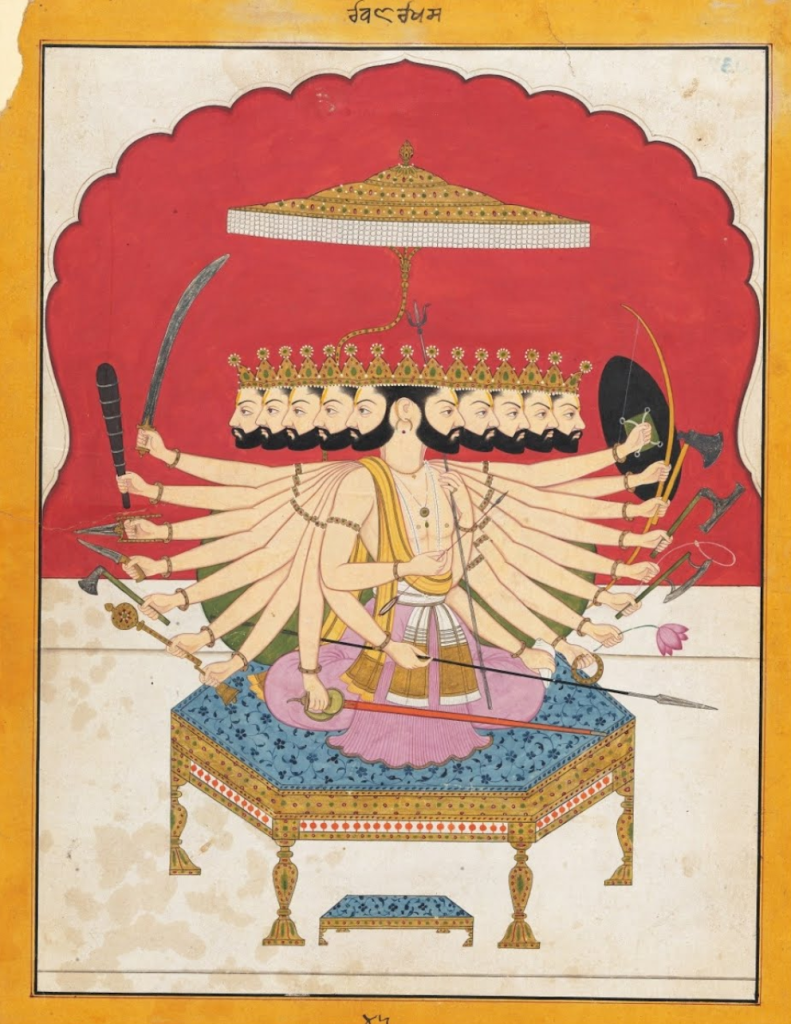
The tradition of Ravan effigy making is embraced by various regions in India, each adding its unique cultural touch to the practice. For instance, in the northern parts of the country, the effigies are often enormous, towering structures that can reach heights of up to 70-80 feet. These grand effigies, adorned with vibrant colours, capture the attention of large crowds who gather to witness the spectacle.
In addition to the symbolic significance, Ravan effigy making has become an art form in itself. Artisans and craftsmen pour their creativity and craftsmanship into crafting the ten-headed demon king, ensuring every detail is meticulous. The effigies are constructed using bamboo or wooden frames and covered in layers of newspaper or other materials to create the body. The head with its ten faces, is carefully shaped, sometimes using papier-mâché or clay. The final touch involves embellishing the effigy with clothing, jewellery, and accessories, bringing it to life with vivid colours and intricate details.
This centuries-old tradition has not only retained its spiritual importance but also become a cultural spectacle, drawing communities together in a spirit of unity and celebration. It serves as a reminder of the enduring relevance of ancient tales and the timeless message of good prevailing over evil.
Materials Required
To bring this ten-headed demon king to life, you’ll need a diverse set of materials that add depth and vibrancy to your creation. From bamboo and newspapers forming the core structure, to colours, fabrics, and accessories for intricate detailing, this guide will provide you with the essential list of materials required for your artistic journey. Join us in this exploration of crafting a Ravan effigy and embrace the festive spirit by assembling these elements, turning them into a masterpiece that symbolizes the age-old tale of good triumph over evil.
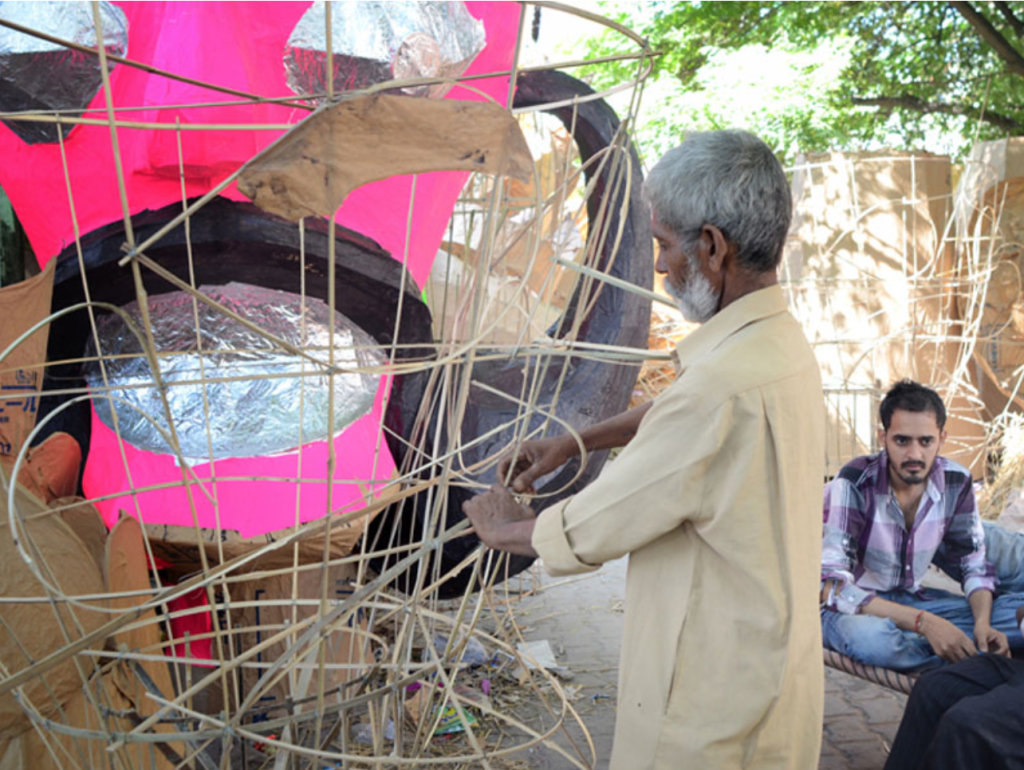
- Bamboo or Wooden Framework: You’ll need bamboo or wooden sticks of various sizes to create the structure of the effigy.
- Newspapers: Collect a large number of newspapers to create the outer covering of the effigy.
- Glue: You may use adhesive or glue to secure the newspaper layers.
- Colours and Paints: Collect acrylic or poster colours to paint the effigy in the traditional palette, which is often bright and vibrant.
- Fabric: They are required to form clothing and accessories to dress the effigy.
- Papier-Mâché or Clay: It is important to create the head of Ravan.
- Accessories: Furthur embellishments such as a crown, jewellery, and any other decorative elements may be added.
Guiding Steps
To make a ravan, you must follow the given steps.
STEP 1: Build the Structure
Assemble the framework for the effigy using bamboo or wooden sticks. The central, taller stick represents Ravan’s body, while the smaller sticks form the arms. Maneuver these sticks to create the basic structure. You can use ropes or strong adhesive for this.
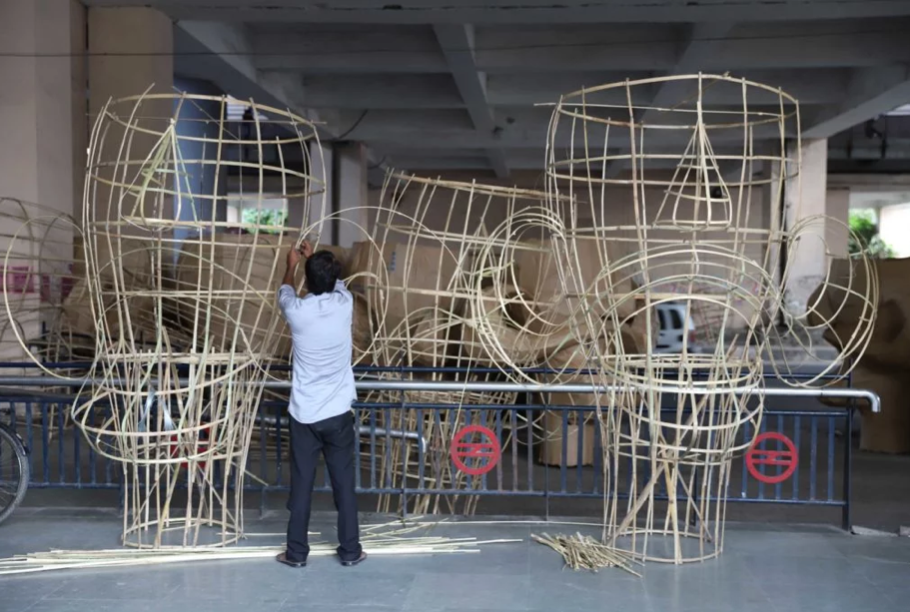
STEP 2: Create the Head
Shape the head of Ravan using papier-mâché or clay. Ravan is traditionally depicted with ten heads, so make sure to create a head with multiple faces.
STEP 3: Cover with Newspapers
Cover the entire framework with layers of newspaper using glue. Apply a generous amount of glue to the sticks and then wrap them with newspaper strips. Allow each layer to dry before adding the next one. This process will give the effigy its shape and structure.
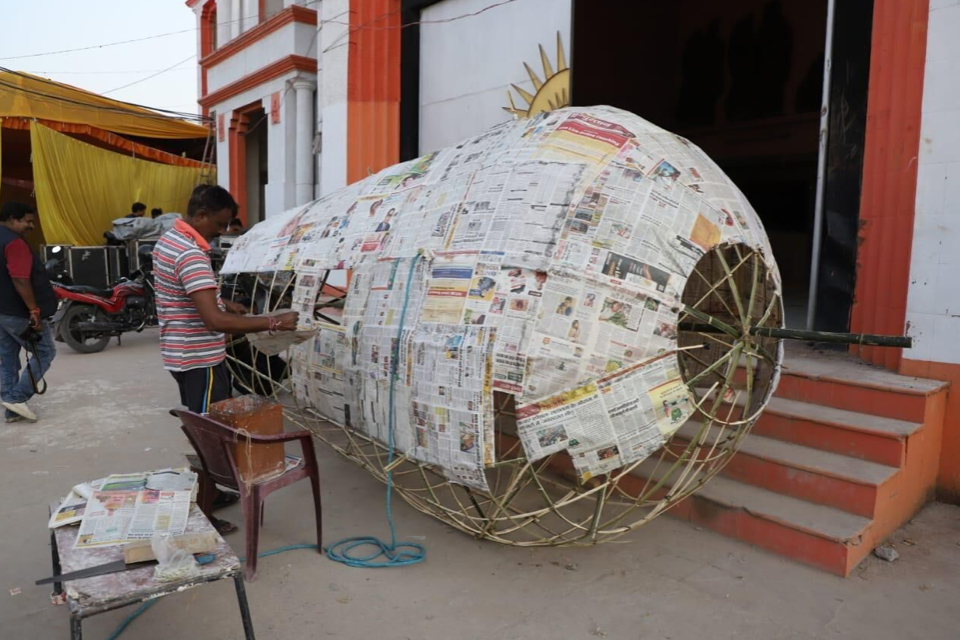
STEP 4: Paint the Effigy
Once the newspaper layers are dry and firm, paint the effigy. Traditional colours for Ravan include bright red, green, and yellow. Pay attention to the details, and be creative with your facial expressions and clothing.
STEP 5: Dress the Effigy
Use fabric to dress the effigy in traditional clothing. Ravan is often depicted wearing kingly attire, so you may use colourful and regal fabrics for this purpose.
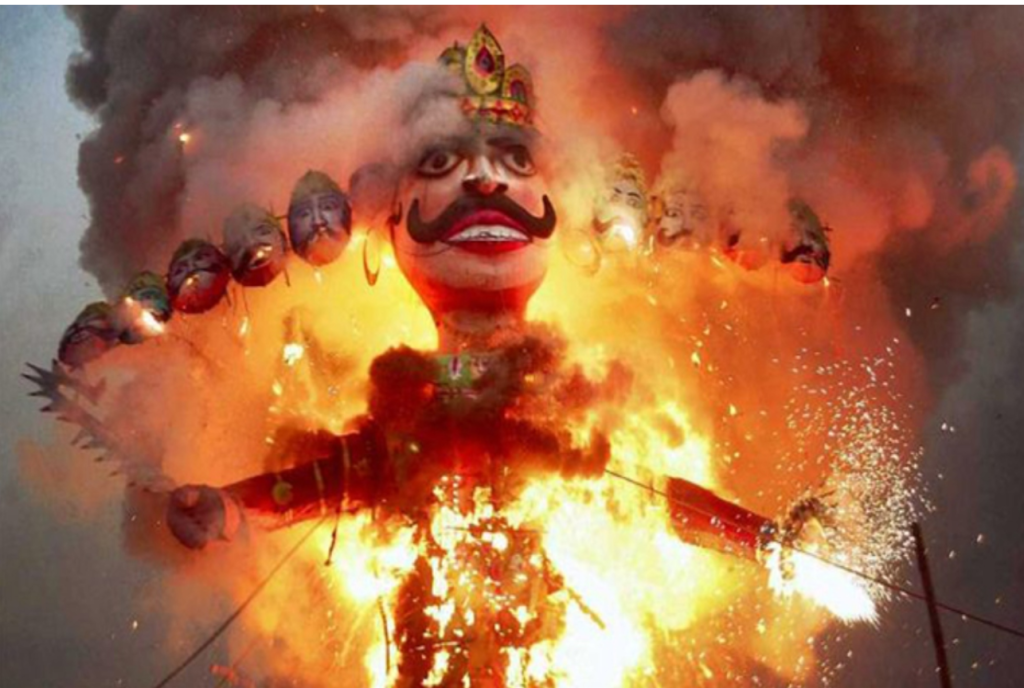
STEP 6: Add Accessories
Enhance the effigy’s appearance by adding accessories like a crown, jewellery, and any other decorative elements that you feel are appropriate.
STEP 7: Finishing Touches
After dressing and decorating the effigy, make sure it’s securely placed on its stand or base to be displayed or burned safely during the Dussehra celebration.
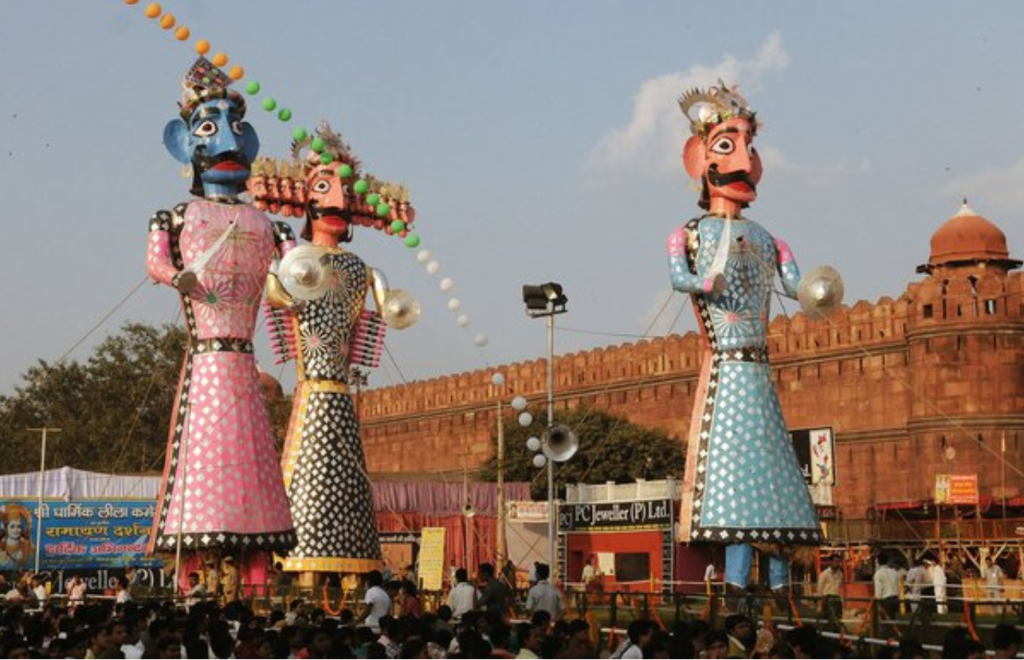
The Bottom Line
Remember, the creation and burning of Ravan effigies during Dussehra symbolize the victory of good over evil, especially in the context of the Hindu epic, Ramayana. Always follow local customs and guidelines when making and displaying these effigies. Take all appropriate precautions during burning. Be compliant with any relevant regulations and you will be safe and sound.
Photo Courtesy – PTI
11 Best Rangoli Designs: Unveiling the Beauty of Rangoli Designs

Contributor

